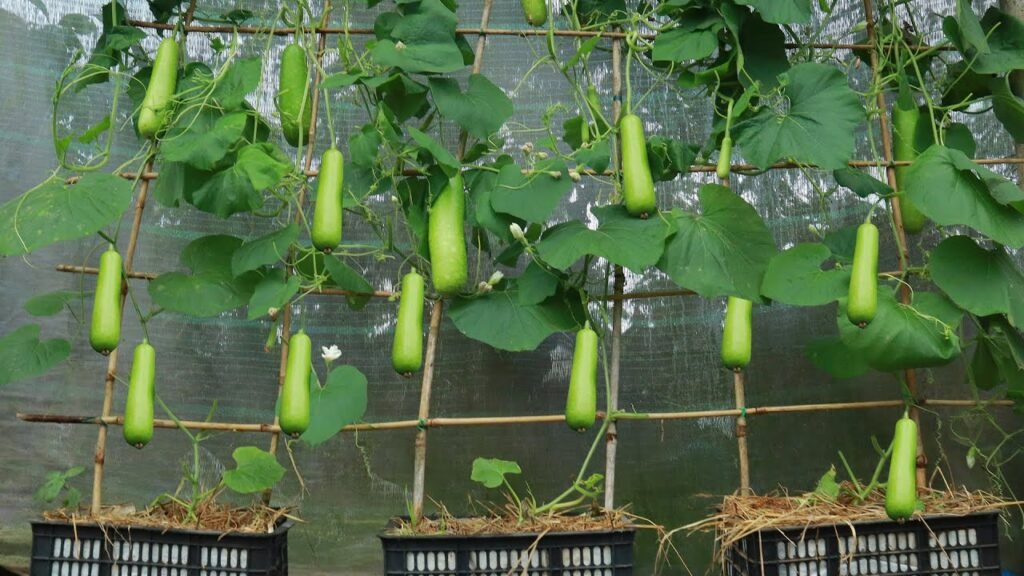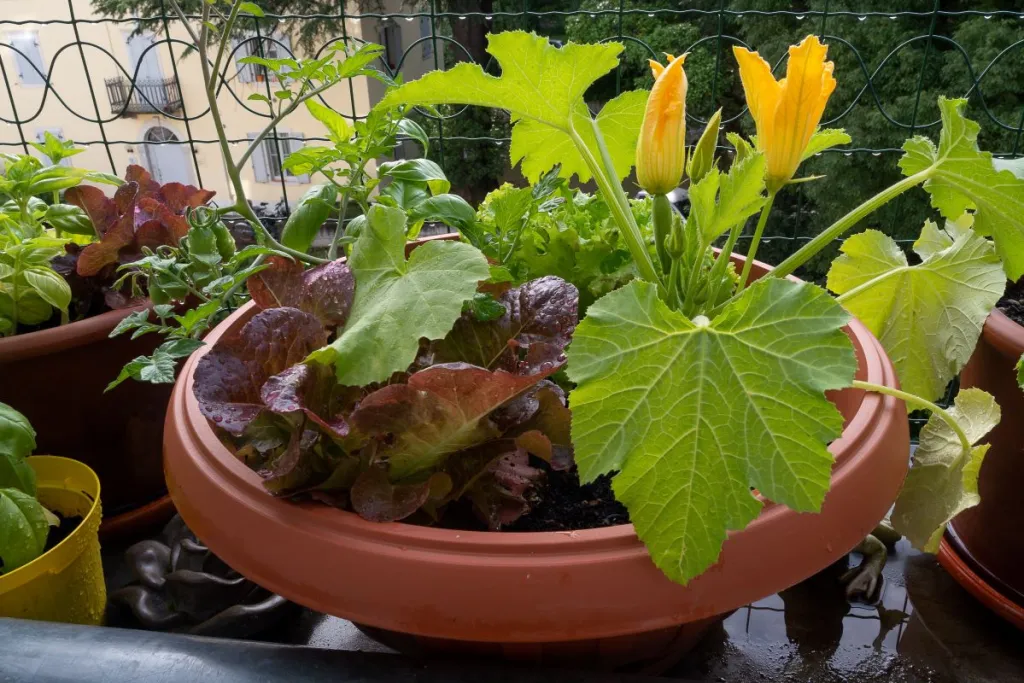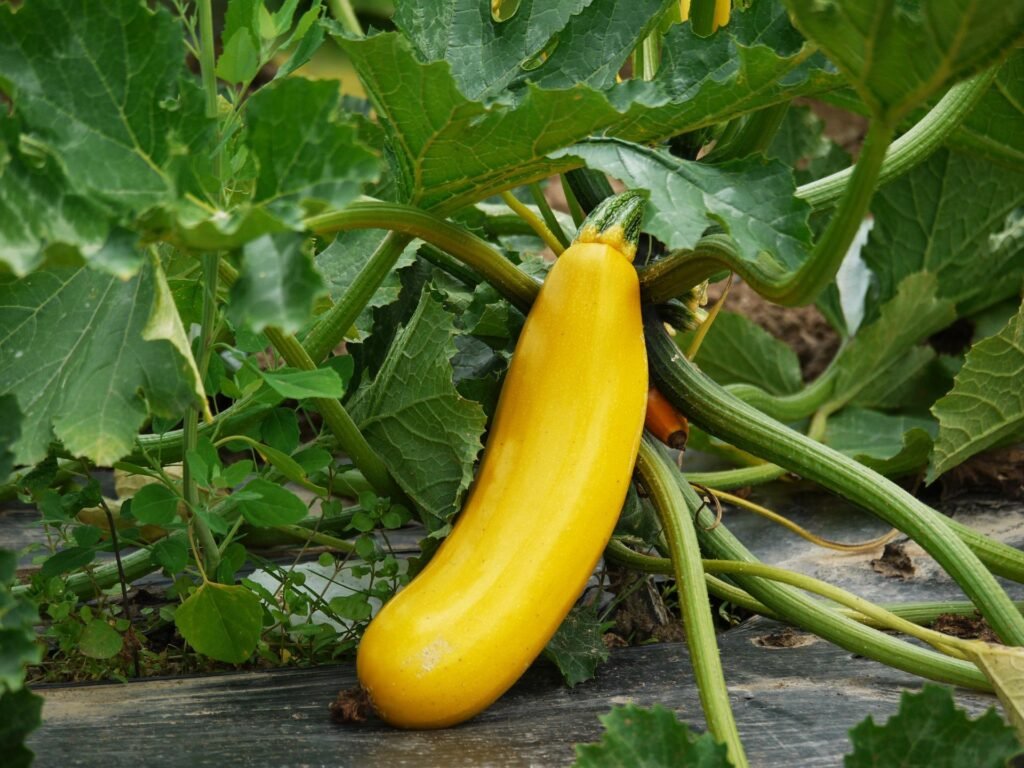Squash is a versatile, nutrient-rich vegetable that is loved in cuisines around the world. From summer squash varieties like zucchini to winter squash types like butternut and acorn, squash is easy to cook, delicious, and highly nutritious. Many gardeners assume that growing squash requires large garden beds, but with the right techniques, squash can thrive in containers, making it perfect for balconies, patios, and small urban spaces. This complete guide will walk you through everything you need to know to grow squash in containers successfully, from choosing the right variety to harvesting your bounty.
Why Grow Squash in Containers?

Container gardening offers several advantages for growing squash:
- Space-Saving: Ideal for homes with limited outdoor space.
- Control Over Soil Quality: Containers allow you to provide nutrient-rich, well-draining soil for optimal growth.
- Mobility: Move containers to catch sunlight or protect plants from harsh weather.
- Pest and Disease Management: Containers help isolate plants from soil-borne diseases and reduce pest infestations.
- Beginner-Friendly: Easy to manage for novice gardeners without requiring large plots.
Choosing the Right Squash Variety for Containers

Not all squash varieties are suitable for container growth. Choose compact, bush-type squash rather than vining types unless you plan to use vertical supports.
Recommended Varieties for Containers:
- Zucchini (Summer Squash): Fast-growing, prolific, and compact.
- Bush Summer Squash: Small, bushy plants that produce numerous fruits.
- Butternut Squash: Smaller bush varieties can thrive in deep containers.
- Pattypan Squash: Compact plants with unique, round-shaped fruits.
Selecting the right variety ensures manageable growth, higher yields, and easier care in containers.
Selecting the Right Container

The container is a critical factor in growing squash successfully. Consider the following:
- Size: Squash has a vigorous root system, so choose containers at least 12–16 inches deep and 15–20 inches wide.
- Material: Plastic, fabric grow bags, or ceramic pots work well. Ensure durability and proper drainage.
- Drainage: Drill or ensure drainage holes at the bottom to prevent waterlogging.
- Mobility: Use containers with handles or lightweight options to move easily when needed.
Pro Tip: Large grow bags are ideal for bush-type squash as they allow for optimal root expansion and airflow.
Preparing the Soil
Squash requires nutrient-rich, well-draining soil. Preparing your soil properly ensures healthy plants and higher yields.
Ideal Soil Mix for Squash Containers:
- 2 parts garden soil
- 1 part compost or well-rotted manure
- 1 part coco peat or perlite for aeration
Mix thoroughly to create a light, fertile medium that retains moisture without becoming soggy. Squash thrives in slightly acidic to neutral soil (pH 6–7).
Planting Squash Seeds or Seedlings

You can grow squash from seeds or young seedlings. Here’s how:
- Seeds: Sow 2–3 seeds per container at a depth of 1 inch. Thin to the strongest plant once seedlings have 2–3 true leaves.
- Seedlings: Transplant seedlings into the container, burying up to the first set of leaves to encourage strong root growth.
- Spacing: Even in containers, maintain adequate spacing to ensure airflow and reduce disease risk.
Tip: Soak squash seeds overnight before planting to speed germination and improve seedling strength.
Watering and Moisture Management

Consistent moisture is crucial for squash plants, especially during flowering and fruiting:
- Water deeply 2–3 times per week or as needed, depending on container size and weather conditions.
- Avoid overwatering, as soggy soil can cause root rot.
- Mulch the top of the soil with straw or dried leaves to retain moisture and prevent soil drying.
Pro Tip: Self-watering containers or adding a water reservoir can reduce watering frequency while maintaining healthy growth.
Fertilization for Maximum Yield
Squash is a heavy feeder and benefits from regular fertilization to produce abundant fruits:
- Organic Fertilizers: Compost tea, vermicompost, or liquid manure supports healthy growth.
- Balanced Fertilizer: Use a balanced NPK fertilizer (Nitrogen, Phosphorus, Potassium) during early growth.
- Flowering and Fruiting Boost: Apply high-phosphorus and potassium fertilizers once flowers appear to encourage more fruits.
Regular fertilization ensures strong plants capable of producing a high yield in containers.
Supporting Your Squash Plants
Even bush-type squash may need support as fruits grow and vines expand:
- Stakes or Trellis: For climbing or vining varieties, provide vertical support to save space.
- Cages: Tomato cages can also support squash vines and prevent sprawling.
- Guiding Vines: Train plants gently to grow upright or in a manageable direction.
Proper support improves air circulation, reduces disease risk, and keeps fruits clean and healthy.
Pest and Disease Management
Container-grown squash is less prone to pests, but vigilance is still necessary:
- Common Pests: Aphids, squash bugs, cucumber beetles, and spider mites.
- Organic Control: Neem oil spray, insecticidal soap, or introducing beneficial insects like ladybugs.
- Disease Prevention: Avoid overcrowding, provide adequate sunlight, and remove infected leaves promptly.
Healthy plants produce more flowers and fruits, directly impacting overall yield.
Pruning and Maintenance
Pruning can help squash plants focus energy on fruit production:
- Remove yellowing or damaged leaves.
- Pinch off excess side shoots for bush varieties to prevent overcrowding.
- For vining squash, trim long vines to control spread and redirect energy to fruit development.
Pruning encourages healthier plants and increases fruit yield in limited container space.
Harvesting Squash
Squash grows quickly and can be harvested in 50–70 days depending on the variety:
- Summer Squash: Pick fruits when they are 6–8 inches long for the best flavor and texture.
- Winter Squash: Harvest when the skin is hard, and the fruit is fully mature.
- Use scissors or a sharp knife to cut fruits, avoiding damage to stems and plants.
- Harvest regularly to encourage continuous production.
Pro Tip: Leaving mature fruits on the plant too long can slow down the development of new fruits.
Tips for Successful Container Squash Gardening
- Sunlight: Ensure at least 6–8 hours of direct sunlight daily.
- Container Size: Bigger containers allow better root growth and higher yields.
- Companion Planting: Plant basil, marigold, or nasturtium nearby to repel pests.
- Vertical Growth: Use trellises for vining varieties to save space.
- Regular Monitoring: Check plants daily for pests, diseases, and nutrient deficiencies.
Advantages of Growing Squash in Containers
- Space Efficiency: Perfect for urban gardening and small patios.
- Control Over Soil: Prevents soil-borne diseases and allows easy nutrient management.
- Portability: Move containers to follow sunlight or protect plants from harsh weather.
- High Yield: Proper care in containers can produce abundant fruits, even in limited space.
- Beginner-Friendly: Ideal for novice gardeners with simple maintenance and easy setup.
Final Thoughts
Growing squash in containers is a rewarding and practical way to enjoy fresh, home-grown vegetables. By selecting the right variety, preparing nutrient-rich soil, providing adequate sunlight, water, and support, and implementing proper pest and disease management, even gardeners with limited space can achieve a bountiful harvest.
Container gardening makes squash cultivation accessible, sustainable, and manageable. It allows urban gardeners, beginners, and enthusiasts to experience the joy of gardening while enjoying nutritious and delicious squash.
Start today, set up your containers, and follow this complete growing guide to harvest a plentiful crop of squash that will impress your family, friends, and even yourself!
